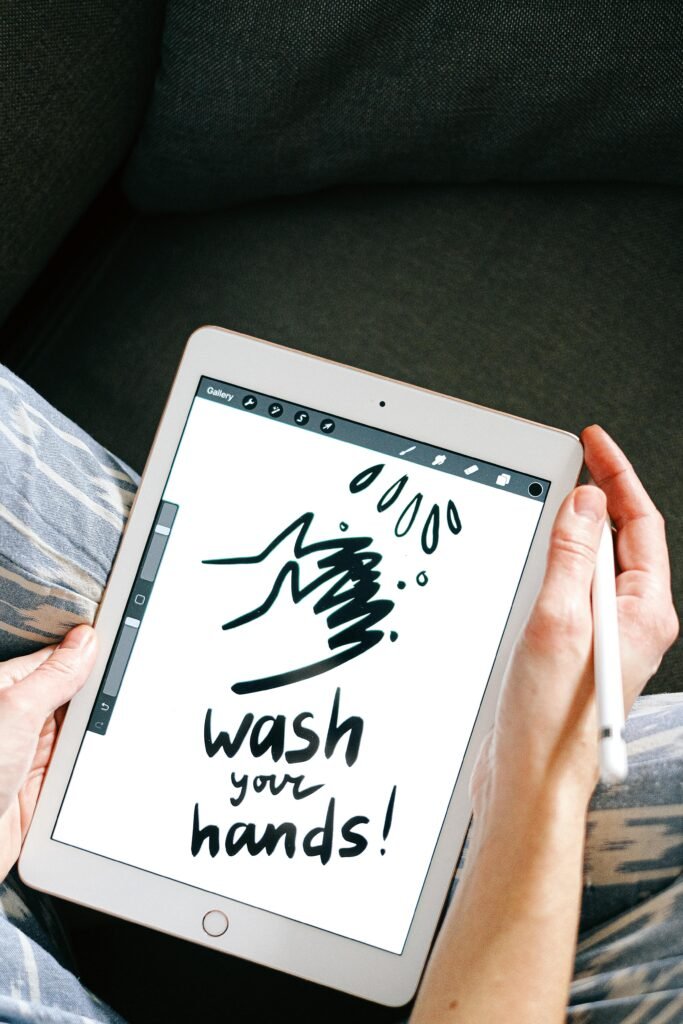Table of Contents
ToggleHow Writing Tablets Works
Writing tablets, in their various forms, operate on intricate technological principles that seamlessly blend digital innovation with the tactile feel of traditional writing. Let’s explore the fundamental workings of these devices:
Affiliate Disclaimer
Some of the links on this website are affiliate links, meaning that if you click on one of these links and make a purchase, I may earn a small commission at no additional cost to you. This commission helps support the maintenance and operation of this website. Please note that I only recommend products and services that I genuinely believe in and that I think will add value to my readers. However, it is important to do your research and make sure that any product or service is right for you before making a purchase. Thank you for your support!
-
- Tactile Technology: The Foundation of Interaction
At the core of the writing tab lies touch-sensitive technology. The tablet’s screen is equipped with sensors that detect touch input, allowing users to interact with the device using their fingers or pan. Capacitive touchscreens, commonly employed in writing tablets, register changes in electrical conductivity when touched, translating these inputs into commands.
- Tactile Technology: The Foundation of Interaction
-
- Stylus Sensitivity: Precision in Every Stroke
The stylus, a crucial component of the writing tab, goes beyond being a mere pen. Equipped with advanced sensors, the stylus detects pressure, tilt, and angle with remarkable accuracy. This level of sensitivity enables users to replicate the nuanced experience of traditional writing and drawing, allowing for precise strokes and shading in digital form.
- Stylus Sensitivity: Precision in Every Stroke
-
- Display Technology: Bringing Content to Life
Writing tab employs various display technologies, ranging from LCD (Liquid Crystal Display) to E-ink. LCD screens provide vibrant colors and fast refresh rates, making them ideal for dynamic applications. On the other hand, E-ink displays replicate the appearance of paper and are gentle on the eyes, offering a more comfortable reading and writing experience, especially in well-lit environments.
- Display Technology: Bringing Content to Life
-
- Digital Ink Simulation: Emulating Pen and Paper
One of the defining features of writing tab is their ability to simulate the feel of traditional ink on paper. This simulation is achieved through the use of digital ink technology, which replicates the texture and appearance of writing on paper. Users experience a familiar tactile sensation, enhancing the overall writing and drawing experience.
- Digital Ink Simulation: Emulating Pen and Paper
-
- Battery and Power Management: Sustaining the Creative Flow
To ensure uninterrupted use, writing tab are equipped with efficient battery and power management systems. These systems optimize energy consumption, extending the device’s battery life. Additionally, many modern writing tablets support quick charging, minimizing downtime and allowing users to focus on their creative endeavors.
- Battery and Power Management: Sustaining the Creative Flow

-
- Processing Power: Enabling Multifunctionality
Under the smooth external of the writing tab false a strong processing unit. This component handles the operation of the tablet, ensuring smooth performance while running applications, processing touch input, and managing data.
- Processing Power: Enabling Multifunctionality
-
- Connectivity: Bridging the Digital Divide
Writing tab often come equipped with various connectivity options, such as Wi-Fi, Bluetooth, and USB ports. These features facilitate seamless integration with other devices and enable users to share, sync, and access their creations across multiple platforms, enhancing collaboration and productivity.
- Connectivity: Bridging the Digital Divide
“In essence, writing tablets merge cutting-edge technology with a user-centric design to deliver a harmonious blend of the digital and analog writing experience. By understanding the intricate mechanics behind these devices, users can fully appreciate the versatility and creative potential that writing tablets bring to the forefront of modern productivity and expression“
Exploring the Diverse Landscape: Types of Writing Tablets
As the demand for digital creativity and productivity grows, various types of writing tab have emerged, each tailored to specific needs and preferences. Let’s delve into the diverse landscape of writing tablets:
-
- Graphic Tab: Precision for Digital Artists
Description: Graphic tablets, also known as drawing tablets, are designed for digital artists and illustrators. They consist of a flat surface and come with a stylus, allowing users to create detailed and precise drawings directly on the tab.
- Graphic Tab: Precision for Digital Artists
Key Features:
-
- Pressure sensitivity for varying line thickness.
-
- Tilt recognition for natural shading effects.
-
- Customizable buttons on the stylus for shortcuts.
-
- Note-Taking Tab: Digital Journals for Productivity
Description: These tablets focus on efficient note-taking and document annotation. They often resemble traditional paper notebooks but offer digital functionalities, enabling users to jot down ideas, draw diagrams, and annotate documents.
- Note-Taking Tab: Digital Journals for Productivity
Key Features:
-
- Handwriting recognition for converting notes to text.
-
- Cloud synchronization for easy access across devices.
-
- Long battery life for extended use during meetings or lectures
-
- Hybrid Tab: Versatility in Form and Function
Description: Hybrid tablets combine the features of a traditional tablet with those of a laptop. They often come with detachable keyboards, allowing users to switch between tablet and laptop modes based on their needs.
- Hybrid Tab: Versatility in Form and Function
Key Features:
-
- Touchscreen functionality for tablet use.
-
- Detachable keyboard for laptop-like productivity.
-
- Compatibility with a wide range of applications.

-
- E-ink Tab: Paper-Like Reading and Writing
Description: E-ink tablets replicate the appearance of paper and are designed for users who prefer a more natural reading and writing experience. They are gentle on the eyes and have longer battery life compared to traditional LCD tablets.
- E-ink Tab: Paper-Like Reading and Writing
Key Features:
-
- Paper-like display for reduced eye strain.
-
- Suitable for reading e-books and long-form content.
-
- Mimics the feel of writing on paper with a stylus.
-
- Interactive Display Tab: Collaboration at Your Fingertips
Description: Interactive display tablets are large screens that allow multiple users to collaborate in real time. Commonly used in educational and professional settings, these tablets support interactive presentations, brainstorming sessions, and collaborative projects.
- Interactive Display Tab: Collaboration at Your Fingertips
Key Features:
-
- Touch-sensitive display for interactive engagement.
-
- Compatibility with collaborative software.
-
- High-resolution screens for clear visuals.
-
- General-Purpose Tab: Everyday Digital Assistants
Description: General-purpose tablets, like the iPad and Android tablets, have evolved to support various tasks, including writing and note-taking. While not specialized for professional artists, they offer a broad range of applications for diverse user needs.
- General-Purpose Tab: Everyday Digital Assistants
Key Features:
-
- App ecosystems for productivity, creativity, and entertainment.
-
- Touchscreen interface for intuitive navigation.
-
- Lightweight and portable design for on-the-go use.
In the dynamic landscape of writing tablets, these categories cater to different preferences, professions, and creative pursuits. Whether you’re an artist, student, professional, or someone who simply enjoys the convenience of digital note-taking, there’s a writing tablet designed to enhance your specific experience.



